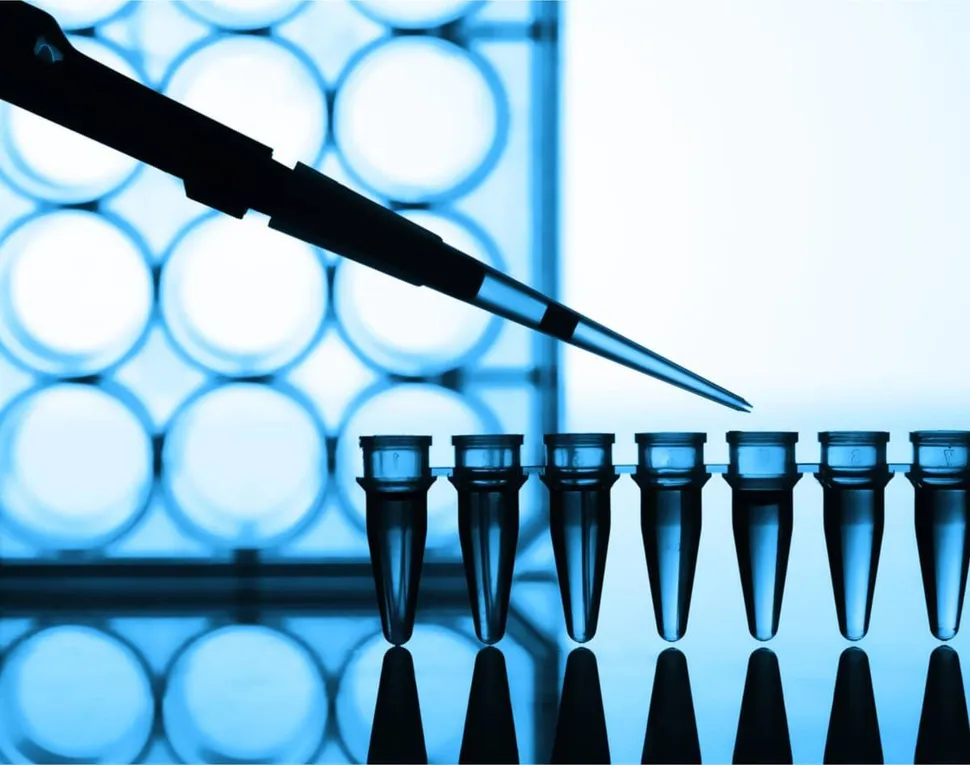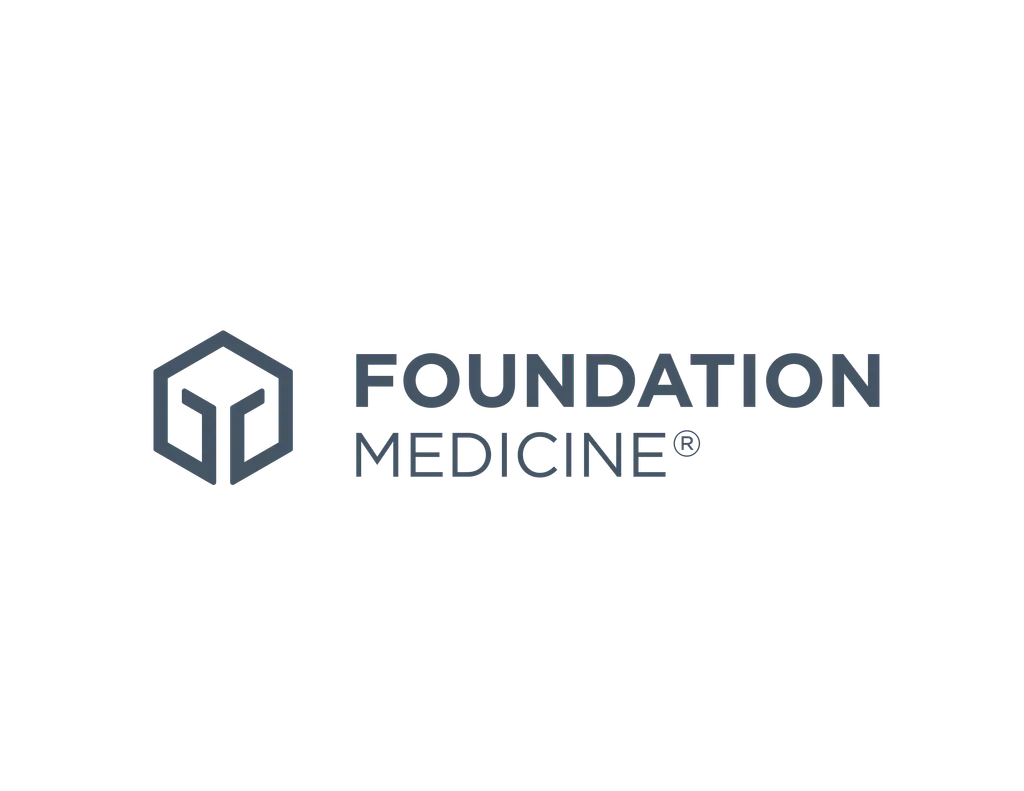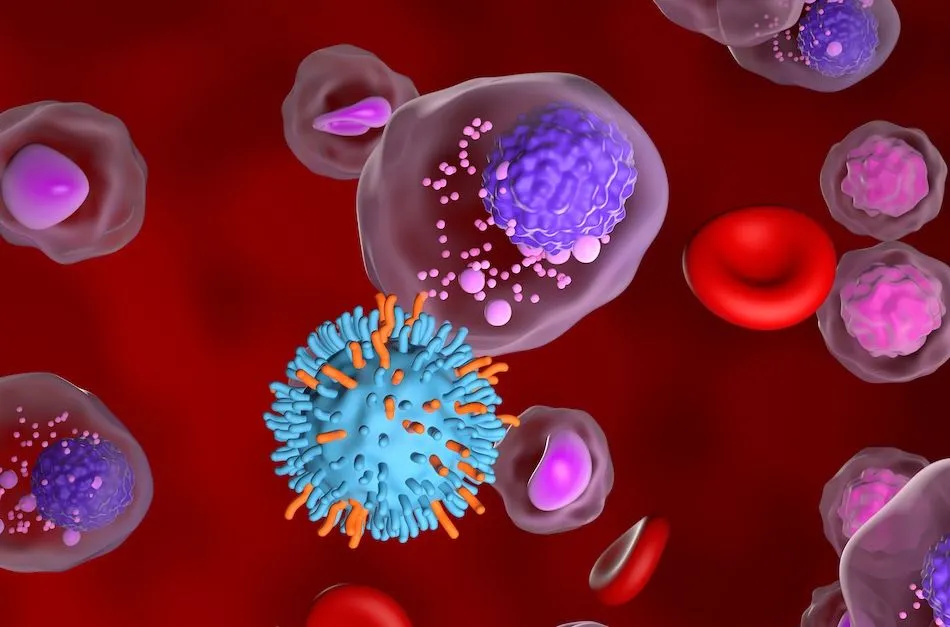MCRT Webcast: Minimal Residual Disease (MRD) Essentials: How Should Patients Interpret Results?

“As our drugs got better, our need to measure got more important.”
Dr. Jeffrey Wolf, UC San Francisco
Minimal residual disease (MRD) is fast becoming a standard in myeloma by which to measure the effectiveness of treatment and understand prognosis estimates. What is the significance of being MRD-negative or MRD-positive? How does each state determine the next steps of therapy? What are the possible changes in how MRD tests are administered? These and many other questions were addressed in the Myeloma Crowd Round Table Interactive Webcast held on Saturday, August 29, 2020.
Drs. Rafael Fonseca and Jeffrey Wolf discussed how patients should interpret results of minimal residual testing:
Jeffrey Wolf, MD, University of California San Francisco: Minimal Residual Disease (MRD) Defined
- The “upside down iceberg” analogy
- At diagnosis, a myeloma patient may have as many as a trillion cancer cells
- When treatment begins, physicians use a number of test to measure the amount of myeloma a patient may have—M-spikes, light- and heavy-chain measurements, etc.—which are defined by terms like partial remission (PR), very good partial remission (VGPR), complete remission (CR), and stringent complete remission (sCR)
- Even with, for example, sCR, there is still cancer remaining, the amount is invisible with the tools and classifications listed above
- Using the “upside down iceberg” analogy, these are all “above the water”
- Minimal residual disease (MRD, also known as measurable residual disease) is the measure of what is “below the water,” i.e., what can’t be detected by tests used “above the water,” where as many as a billion cancer cells may still be present
- CR is a misnomer because people still relapse
- The presentations will explain how measurement of what disease remains “below the water” is being used and developed
Rafael Fonseca, MD, Mayo Clinic, Scottsdale, AZ: MRD Tests and Applications
- What to expect with MRD and how experts think about using it to manage myeloma
- MRD tests are medical methods to “go deeper” in the ability to detect any residual cells that “stay behind” after a phase of treatment
- There are many types of tests including genetic testing, flow cytometry (pathologists use dyes to identify, classify and count cells), or tests that measure proteins in the serum
- MRD is a diagnostic test
- A way of perfecting measurement of what is in the bone marrow to better gauge what is happening with treatment
- Years ago, reaching a “plateau” was acceptable, then VGPR, then CR, then sCR, but now MRD is the “cutting edge”
- Two ways it can be used
- As a regulatory endpoint: use for clinical trials to allow for faster drug approval, debate about this is ongoing
- Clinical application: to determine the effectiveness of a clinical trial, but this is generally limited to specialists who have pathologists and others to help them determine effectiveness
- All new clinical trials use MRD as an important endpoint
- MRD-negativity seems to be translating into better outcomes, therefore it is a good goal for treatment
- MRD-negativity cannot prove that that there are no myeloma cells left
- One sample from one area does not conclusively prove that other area may have residual cells
- At Mayo and other specialty centers, MRD testing is being done routinely: after stem cell transplant (ASCT) and with patients who have sustained deep responses over time
Jeffrey Wolf, MD, University of California San Francisco: How Should Patients Think about MRD?
- Making clinical decisions about MRD status in individual patients is still controversial
- The best way to measure MRD is with a bone marrow aspiration, not yet in a position to use blood-based tests
- If and when blood-based tests are developed, MRD testing should be widely available
- Case study 1
- In 2011, a patient with no high-risk features, after ASCT and a year of lenalidomide, achieve sCR but could no longer tolerate lenalidomide and experienced side effects and low blood counts
- It was decided to not treat with maintenance
- Starting in July 2014, the patient volunteered for annual bone marrow aspirations
- Every year since he has had 0 malignant cells out of 1 million cells counted
- Case study 2
- A patient with high-risk disease and del17 p [please see videos of Myeloma Crowd Round Table webcast on Myeloma Genetics for more information genetic classifications]
- Patient had ASCT followed by triplet therapy of Revlimid, Velcade and dexamethasone (RVd) for more than three years, and then was switched to Revlimid because of quality of life issues, and then stopped therapy after five years
- MRD testing indicated few myeloma cells and then none
- In both case studies, MRD was “quite useful” in determining the efficacy of treatment decisions
- Case study 3
- Patient with renal failure, heavily treated and had dialysis
- MRD status helped kidney specialist to agree to kidney transplant
- There are other areas with MRD status could impact clinical decision-making
Audience Questions & Answers
- 0:24 - Explain why MRD is important as a clinical trial endpoint.
- 2:29 - [volume low for asked question] Please go over the different types of tests and why some require a baseline and others don’t?
- 5:55 - Is there any way of measuring myeloma stem cells when no myeloma cells can be measured by MRD?
- 6:55 - What should one do if one has rapidly increasing light chains and relatively stable M protein using MRD?
- 7:49 - Is MRD able to define a cure?
- 11:07 - If, for example, after 5 years of treatment, a doctor indicates that one is “functionally cured,” what does that mean?
- 15:12 - When MRD numbers go up, is that a time to change therapy?
- 17:14 - How do you use imaging in additions to MRD testing?
- 19:04 - If a newly diagnosed patient reaches MRD-negativity during induction, should a transplant still be done?
- 22:28 - Why isn’t everyone using MRD? Is it expensive? Does insurance pay for MRD testing and how much does it cost?
- 25:33 - Is there any single therapy that results in MRD-negativity?
- 27:42 - Do you see differences in genetic factors? Do patients with high-risk genetics get into MRD-negativity less often?
- 30:26 - Because of accuracy and reliability issues are there standardized MRD tests? Are there facilities creating their own tests? If so, are they more or less accurate?
- 33:10 - If one doesn’t get a baseline as a newly diagnosed patient, should one get it at first relapse?
- 33:57 - How does MRD testing compare to measuring levels of BCMA?
- 35:05 - How many MRD-negative tests would one need to decide to stop treatmet?
- 36:20 - When do you anticipate the availability of a blood-based MRD test?
- 38:23 - Is there a standardized test in the effort to determine clinical trial endpoints?
- 39:50 - How does someone become eligible for a MRD test? How does one go about the process of getting a MRD test and when?
- 40:35 - What is the difference between CR and sCR?
- 41:39 - What is the pathway for making decisions like whether to transplant, whether to consolidate, what kind of maintenance, when do you suspend maintenane, etc.? Would using MRD as a tool to make decisions?
- 43:56 - A question about solitary plasmacytomas: a patient had one removed ten years ago and no evidence of myeloma, will it become myeloma and would a MRD be helpful?
- 47:00 - How frequently do you recommend MRD testing to measure relapse?
- 49:00 - For patients who are achieving MRD-negativity quickly, why do they also relapse quickly in some instances?
- 51:20 - Can one go from MRD-negative to MRD-positive and then back to MRD-negative again?
- 52:44 - A patient relapsed after two years of MRD-negativity, even though the patient was on daratumumb, pomalidomide and dexamethasone as maintenance and exposed to RVd on the frontline. What would be an attractive option for such a patient?
- 54:25 - Why should a patient not get a clonoSEQ [Adaptive Biotechnologies’ MRD test] MRD to get a volume of positive cells even if the light chains increase but not to the level of relapse?
- 55:20 - Do you think mass spectrometry can be used as a less invasive way of measuring MRD or is it related to measuring something different?
- 57:14 - Can you clarify the differences between flow cytometry, next generation sequencing (NGS) and MRD?
- 59:38 - In the future, will it be possible to go to even more sensitive testing? [At the end of the answer, Dr. Fonseca references a discussion he had with Dr. Lanny Kirsch, the Senior Vice President of Translational Medicine of Adaptive Biotechnologies. It is included below.]
- 1:05:45 - A short HealthTree demonstration.
Dr. Fonseca discusses MRD testing with Dr. Lanny Kirsch, Sr. VP of Translational Medicine, Adaptive Biotechnologies
Thanks to our Round Table sponsors
 .
.  .
. 
 .
. 
 .
.  .
. 


“As our drugs got better, our need to measure got more important.”
Dr. Jeffrey Wolf, UC San Francisco
Minimal residual disease (MRD) is fast becoming a standard in myeloma by which to measure the effectiveness of treatment and understand prognosis estimates. What is the significance of being MRD-negative or MRD-positive? How does each state determine the next steps of therapy? What are the possible changes in how MRD tests are administered? These and many other questions were addressed in the Myeloma Crowd Round Table Interactive Webcast held on Saturday, August 29, 2020.
Drs. Rafael Fonseca and Jeffrey Wolf discussed how patients should interpret results of minimal residual testing:
Jeffrey Wolf, MD, University of California San Francisco: Minimal Residual Disease (MRD) Defined
- The “upside down iceberg” analogy
- At diagnosis, a myeloma patient may have as many as a trillion cancer cells
- When treatment begins, physicians use a number of test to measure the amount of myeloma a patient may have—M-spikes, light- and heavy-chain measurements, etc.—which are defined by terms like partial remission (PR), very good partial remission (VGPR), complete remission (CR), and stringent complete remission (sCR)
- Even with, for example, sCR, there is still cancer remaining, the amount is invisible with the tools and classifications listed above
- Using the “upside down iceberg” analogy, these are all “above the water”
- Minimal residual disease (MRD, also known as measurable residual disease) is the measure of what is “below the water,” i.e., what can’t be detected by tests used “above the water,” where as many as a billion cancer cells may still be present
- CR is a misnomer because people still relapse
- The presentations will explain how measurement of what disease remains “below the water” is being used and developed
Rafael Fonseca, MD, Mayo Clinic, Scottsdale, AZ: MRD Tests and Applications
- What to expect with MRD and how experts think about using it to manage myeloma
- MRD tests are medical methods to “go deeper” in the ability to detect any residual cells that “stay behind” after a phase of treatment
- There are many types of tests including genetic testing, flow cytometry (pathologists use dyes to identify, classify and count cells), or tests that measure proteins in the serum
- MRD is a diagnostic test
- A way of perfecting measurement of what is in the bone marrow to better gauge what is happening with treatment
- Years ago, reaching a “plateau” was acceptable, then VGPR, then CR, then sCR, but now MRD is the “cutting edge”
- Two ways it can be used
- As a regulatory endpoint: use for clinical trials to allow for faster drug approval, debate about this is ongoing
- Clinical application: to determine the effectiveness of a clinical trial, but this is generally limited to specialists who have pathologists and others to help them determine effectiveness
- All new clinical trials use MRD as an important endpoint
- MRD-negativity seems to be translating into better outcomes, therefore it is a good goal for treatment
- MRD-negativity cannot prove that that there are no myeloma cells left
- One sample from one area does not conclusively prove that other area may have residual cells
- At Mayo and other specialty centers, MRD testing is being done routinely: after stem cell transplant (ASCT) and with patients who have sustained deep responses over time
Jeffrey Wolf, MD, University of California San Francisco: How Should Patients Think about MRD?
- Making clinical decisions about MRD status in individual patients is still controversial
- The best way to measure MRD is with a bone marrow aspiration, not yet in a position to use blood-based tests
- If and when blood-based tests are developed, MRD testing should be widely available
- Case study 1
- In 2011, a patient with no high-risk features, after ASCT and a year of lenalidomide, achieve sCR but could no longer tolerate lenalidomide and experienced side effects and low blood counts
- It was decided to not treat with maintenance
- Starting in July 2014, the patient volunteered for annual bone marrow aspirations
- Every year since he has had 0 malignant cells out of 1 million cells counted
- Case study 2
- A patient with high-risk disease and del17 p [please see videos of Myeloma Crowd Round Table webcast on Myeloma Genetics for more information genetic classifications]
- Patient had ASCT followed by triplet therapy of Revlimid, Velcade and dexamethasone (RVd) for more than three years, and then was switched to Revlimid because of quality of life issues, and then stopped therapy after five years
- MRD testing indicated few myeloma cells and then none
- In both case studies, MRD was “quite useful” in determining the efficacy of treatment decisions
- Case study 3
- Patient with renal failure, heavily treated and had dialysis
- MRD status helped kidney specialist to agree to kidney transplant
- There are other areas with MRD status could impact clinical decision-making
Audience Questions & Answers
- 0:24 - Explain why MRD is important as a clinical trial endpoint.
- 2:29 - [volume low for asked question] Please go over the different types of tests and why some require a baseline and others don’t?
- 5:55 - Is there any way of measuring myeloma stem cells when no myeloma cells can be measured by MRD?
- 6:55 - What should one do if one has rapidly increasing light chains and relatively stable M protein using MRD?
- 7:49 - Is MRD able to define a cure?
- 11:07 - If, for example, after 5 years of treatment, a doctor indicates that one is “functionally cured,” what does that mean?
- 15:12 - When MRD numbers go up, is that a time to change therapy?
- 17:14 - How do you use imaging in additions to MRD testing?
- 19:04 - If a newly diagnosed patient reaches MRD-negativity during induction, should a transplant still be done?
- 22:28 - Why isn’t everyone using MRD? Is it expensive? Does insurance pay for MRD testing and how much does it cost?
- 25:33 - Is there any single therapy that results in MRD-negativity?
- 27:42 - Do you see differences in genetic factors? Do patients with high-risk genetics get into MRD-negativity less often?
- 30:26 - Because of accuracy and reliability issues are there standardized MRD tests? Are there facilities creating their own tests? If so, are they more or less accurate?
- 33:10 - If one doesn’t get a baseline as a newly diagnosed patient, should one get it at first relapse?
- 33:57 - How does MRD testing compare to measuring levels of BCMA?
- 35:05 - How many MRD-negative tests would one need to decide to stop treatmet?
- 36:20 - When do you anticipate the availability of a blood-based MRD test?
- 38:23 - Is there a standardized test in the effort to determine clinical trial endpoints?
- 39:50 - How does someone become eligible for a MRD test? How does one go about the process of getting a MRD test and when?
- 40:35 - What is the difference between CR and sCR?
- 41:39 - What is the pathway for making decisions like whether to transplant, whether to consolidate, what kind of maintenance, when do you suspend maintenane, etc.? Would using MRD as a tool to make decisions?
- 43:56 - A question about solitary plasmacytomas: a patient had one removed ten years ago and no evidence of myeloma, will it become myeloma and would a MRD be helpful?
- 47:00 - How frequently do you recommend MRD testing to measure relapse?
- 49:00 - For patients who are achieving MRD-negativity quickly, why do they also relapse quickly in some instances?
- 51:20 - Can one go from MRD-negative to MRD-positive and then back to MRD-negative again?
- 52:44 - A patient relapsed after two years of MRD-negativity, even though the patient was on daratumumb, pomalidomide and dexamethasone as maintenance and exposed to RVd on the frontline. What would be an attractive option for such a patient?
- 54:25 - Why should a patient not get a clonoSEQ [Adaptive Biotechnologies’ MRD test] MRD to get a volume of positive cells even if the light chains increase but not to the level of relapse?
- 55:20 - Do you think mass spectrometry can be used as a less invasive way of measuring MRD or is it related to measuring something different?
- 57:14 - Can you clarify the differences between flow cytometry, next generation sequencing (NGS) and MRD?
- 59:38 - In the future, will it be possible to go to even more sensitive testing? [At the end of the answer, Dr. Fonseca references a discussion he had with Dr. Lanny Kirsch, the Senior Vice President of Translational Medicine of Adaptive Biotechnologies. It is included below.]
- 1:05:45 - A short HealthTree demonstration.
Dr. Fonseca discusses MRD testing with Dr. Lanny Kirsch, Sr. VP of Translational Medicine, Adaptive Biotechnologies
Thanks to our Round Table sponsors
 .
.  .
. 
 .
. 
 .
.  .
. 



about the author
Greg Brozeit
Greg Brozeit has been with the HealthTree Foundation since 2015 when he began volunteering for the Myeloma Crowd. Prior to that he worked with Dr. Bart Barlogie and the International Myeloma Foundation, inaugurating many myeloma patient advocacy and education programs.
More on HealthTree Programs
Trending Articles
Upcoming Events




Get the Latest Multiple Myeloma Updates, Delivered to You.
By subscribing to the HealthTree newsletter, you'll receive the latest research, treatment updates, and expert insights to help you navigate your health.
Together we care.
Together we cure.
3x Faster.












